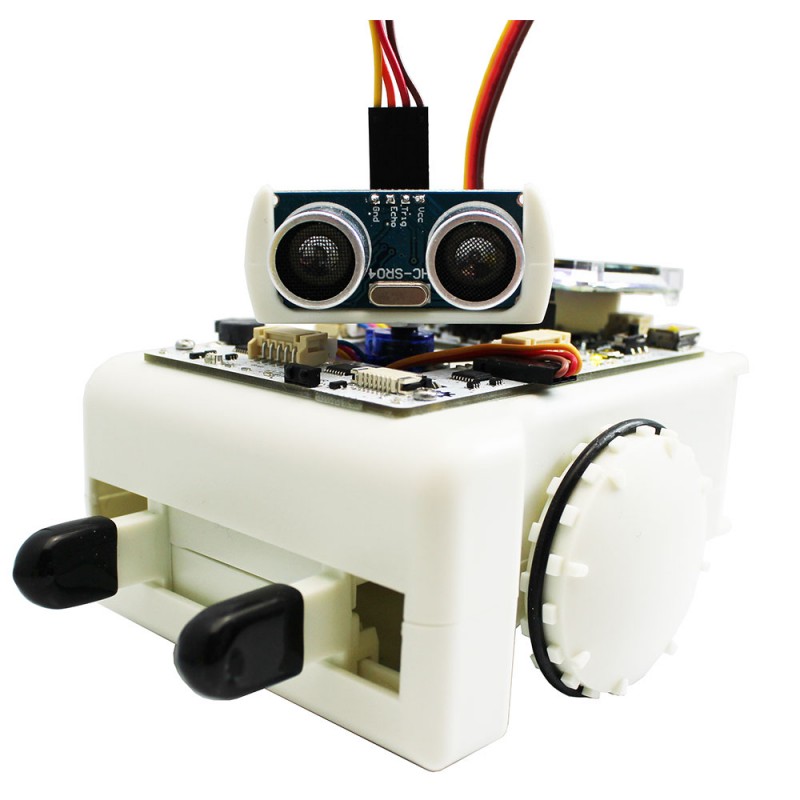Alright, so lets do this blog thing.
I recently decided that I needed to stretch my brain to prevent myself falling off the evolutionary ladder and becoming the world’s largest broccoli. Others may call it a midlife crisis, I call it a hobby but the concept is the same – I wanted to create something and learn new (maybe even useful!) skills to ward off depression and boredom at work.
Real engineers won’t use the Arduino platform of course, its a toy to them. I on the other hand, have no such pride and eagerly read up all the things about the devices and the community, culminating to purchase a Sparki Robot for myself for Christmas (on sale).
Sparki is a delight and works right out of the box. I drove it around a little and started to get used to the IDE when I decided that it is a little too “pre-fabricated” for me. I wanted to learn to build these things, not just use them. There is nothing wrong with the robot itself (I have it and I am looking forward to re-activate it) but I went and bough an Arduino Starterpack containing an Uno, some resistors and a great project book. I faithfully followed most examples until I understood the principle and started messing with the code or hardware until things broke. Subsequently, I added Simon Monk’s excellent book to my reading list, a lot more background on the programming language.
And with knowledge, my aspirations grew and I looked for a big project that would be useful, achievable and yet pretty complex. Coincidentally, I was getting interested in building a chicken coop for no practical reasons whatsoever other than it’ll be a cool thing to do, I like eggs, chicken breast pretty and much all non-stinging critters. However, chickens require a ton of maintenance and care. Starting from a coop from scratch (sorry) is a tad daunting.
However, if one combines an Arduino with a chicken coop one could envisage a system where a lot of the routine maintenance and care is automated!
A project was hatched (sorry). I would build a chicken coop where all environmental monitoring and as many of the routine jobs as possible would be taken care of by automated systems. People have done this and everything that has been done before, can be improved on.
Ok, now we are getting somewhere. The Arduino project has a purpose. So, I structured the project into:
- Data acquisition (power supplies, sensors, temperature, humidity, light levels etc)
- Data processing (averaging, outlier removal, smoothing)
- Data transmission (need to go wireless, we have 3 acres)
- Data display and analysis (cloud or local)
- Action (opening of gates, vents (sorry), heating elements, water pumps etc).
- Get chickens
So looking at this list, I decided to start at the top and learn all about Arduino’s ability to acquire environmental data, process it and transmit it to some jury-rigged base station. Without chickens however, I would need a test bed to practice my skills and I quickly decided that a weather station would be ideal. First of all, its useful (nearly as useful as looking out of the window), secondly it would be an exact copy of a wireless environmental sensory platform that I would later be using (temperature, humidity for example).
Now, the world does not need more weatherstation designs. Even with Arduinos, there are hundreds, I assume everyone who ever bought an Arduino puts a DHT22 temperature and humidity probe on it at some point and displays the data with an LCD shield. New, this isn’t. For me, it was motivating because I could test my skills and designs without harming any chickens.
And so, the build of my weatherstation began.
Of which I shall write in subsequent posts.

